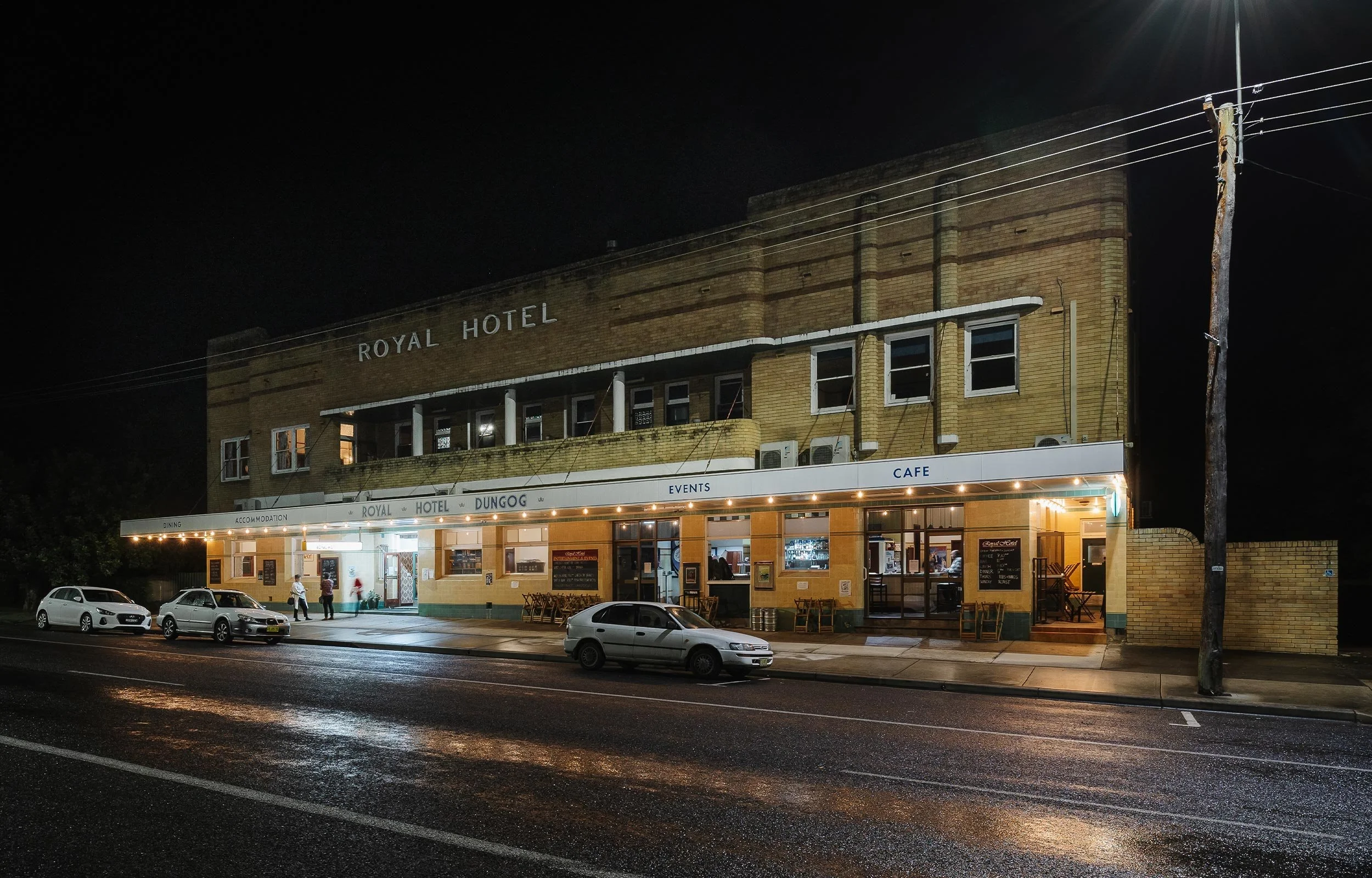
About the Royal Hotel Dungog
For more than 175 years, the Royal Hotel Dungog has been part of the town’s story. Today, this heritage-listed country pub blends history with modern comfort. It’s a place where locals gather, visitors feel at home, and the town’s creative, connected spirit comes alive.
Our Story
The Royal Hotel Dungog has stood on this site since opening as the Durham Hotel in 1850, evolving through time until assuming its present striking Art Deco design in 1939. Built in the streamlined “P&O Ship Style,” the building became a local landmark, complete with a commercial kitchen and dining room that brought city flair to the country.
Through fires, rebuilds, and generations of ownership, our historic hotel in regional NSW has remained a constant in Dungog life – a place to eat, drink, rest and reconnect.
Today at the Royal
The Royal Hotel Dungog is more than just a country pub, it’s a true destination in the Hunter Valley.
Eat & Drink: Pub classics with a modern twist, seasonal specials, and fine dining nights matching local ingredients with great wines.
Stay the Night: Boutique accommodation with self-contained apartments and heritage-style rooms, perfect for families, groups or solo travellers.
Live Music & Events: From local acts to touring artists, our beer garden and lounge make us one of this region’s leading live music venues.
Community Hub: Trivia nights, community support, and a friendly bar where stories are shared.
About Dungog
Dungog is a name based on a Gringai Aboriginal name meaning “place of thinly wooded hills”. The Gringai people resided in the general area prior to the first white settlement in the early 1800s.
The first settlers were searching for lost stock before timber getters arrived, drawn by the magnificent cedar trees in the surrounding hills. By the mid-1800s, crops like wheat, corn and tobacco gave way to dairying and timber, industries that shaped the town’s growth.
Named Dungog in 1834, the town grew quickly — with the arrival of the railway in 1911, a local dairy co-operative, and even an open-air cinema in 1912. Today, Dungog is known as a creative, welcoming country town, framed by the Barrington Tops, the historic James Theatre, galleries, cycling trails, and the laidback pace that makes visitors feel instantly at home.
The People
Behind the Royal Hotel Dungog is a small team of locals who know how to make guests feel welcome. From the kitchen crew plating up fresh meals to the front bar staff pouring icy beers with a smile, it’s a pub run on true country hospitality.
The owners are committed to preserving the historic hotel while ensuring it remains a vibrant, modern Hunter Valley destination that serves both the community and visitors alike.
Whether you’re here for a weekend getaway, a live gig, or just a cold drink after a long ride, the Royal Hotel Dungog is a place to slow down, connect, and feel part of something timeless.







Join our email list
Join our email list to find out about everything that’s happening at Royal Hotel Dungog, including upcoming gigs, performances, events and food specials!











